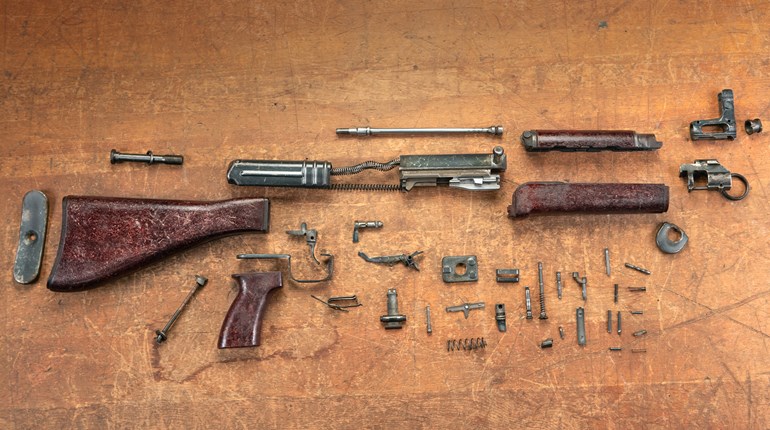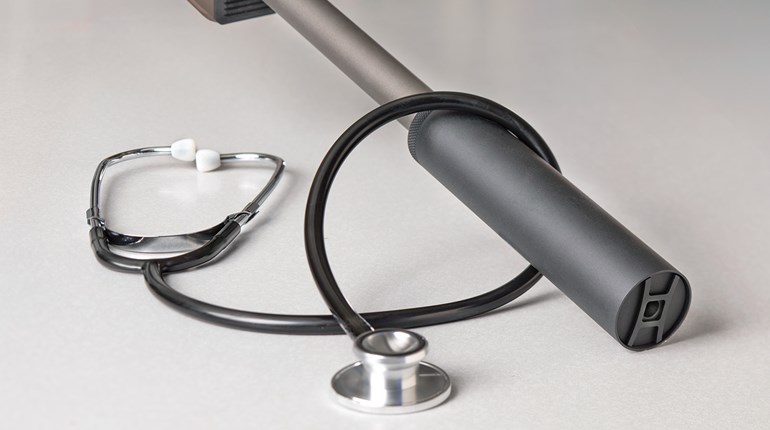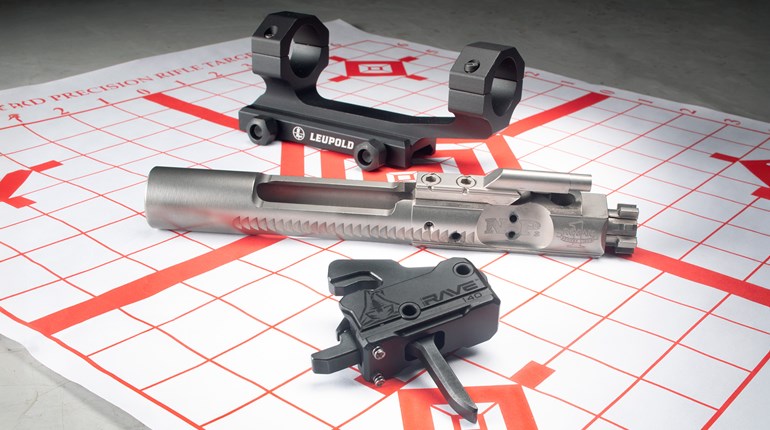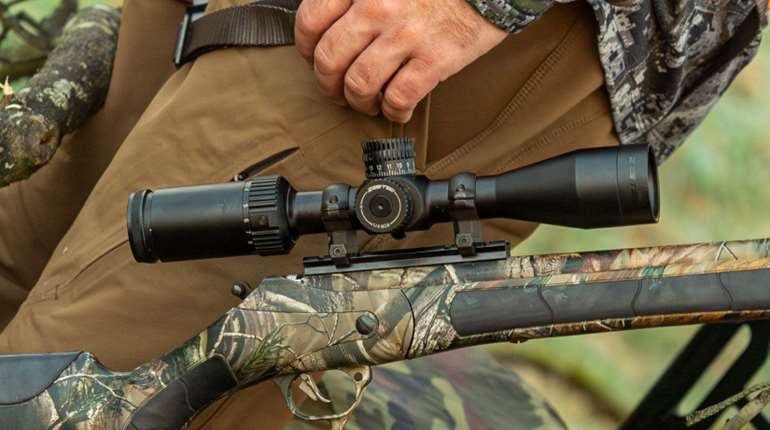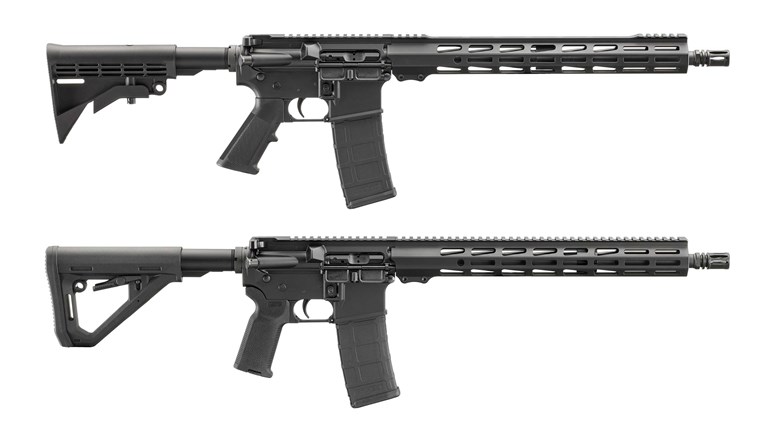** When you buy products through the links on our site, we may earn a commission that supports NRA's mission to protect, preserve and defend the Second Amendment. **
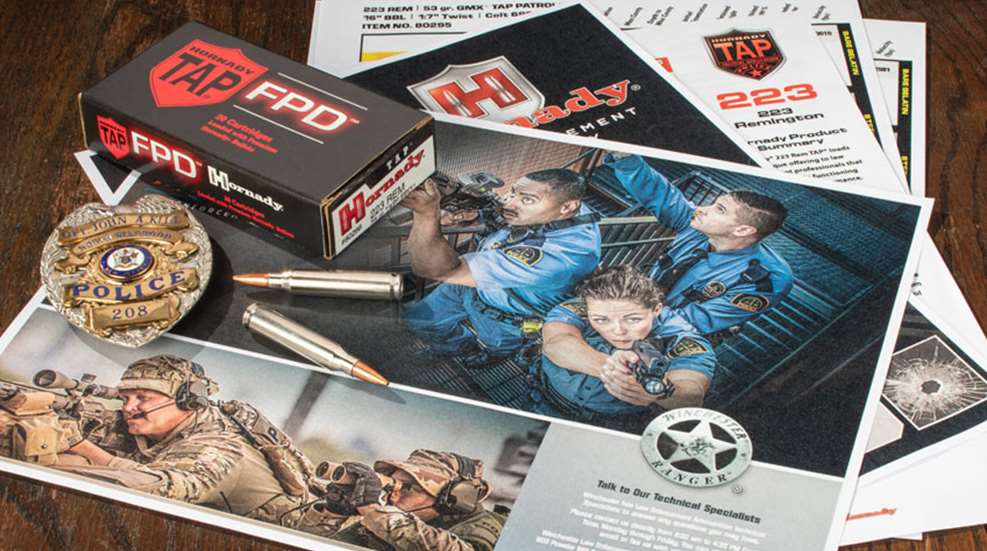
Much law enforcement ammunition is designed to be task-specific. Choose ammunition best suited to your particular situation to achieve the desired results.
I’ve maintained close associations with a wide variety of law enforcement officers (LEOs) since the early 1990s. Through both my Army work and current business, I’ve watched agencies of all sizes increase the quality of their guns and gear throughout that time. But every so often, I hear complaints from officers about departments that select rifle ammunition with more emphasis on low cost than high performance. The volume of excellent ammunition and ballistic-test information available today makes this problem difficult for me to comprehend. So, I recently contacted several LEOs and LE trainers to gain better insight into how duty rifle ammunition is selected. What I found serves as useful information for both LEOs and civilian rifle shooters alike.
Nearly all of the direct responses mentioned that some form of testing guided ammo selections, with cost a secondary consideration. One trainer, Ron Flowers of Police Defensive Firearms Training, a former LEO and full-time staff instructor for the NRA’s LE Division, queried former students to see how their departments choose rifle ammunition. His responses paint a general picture of things on that side of the blue line. A third of those officers said that their departments use the FBI’s extensive ballistic database as a guide. Most of the others mentioned some form of internal testing or manufacturer’s live demonstrations to steer their selections. A small percentage of respondents stated that cost was the only factor in their employers’ ammo-selection processes. This ratio of good-to-bad selection techniques was far better than I anticipated.
I also reached out to a well-known FBI ballistician who has been neck-deep in the world of terminal-ballistic testing for several decades. His own observations show that most departments do a good job of ensuring that their officers have proven handgun ammunition, but he acknowledged that the same care is sometimes absent when selecting rifle loads. Whenever this ballistics guru and active LE trainer encounters such an imbalance, he advises that since an officer may be compelled to use lethal force with a rifle or a pistol, the performance of each firearm’s ammunition should match. This is sound logic for LEOs, and we average folks can apply this same rationale to our own defensive-ammo selections.
The FBI’s ammunition database is available to law enforcement agencies to aid the process of selecting ammunition that will penetrate various barrier materials and still travel deeply into live tissue, while expanding adequately to incapacitate threats. Unfortunately, those of us who don’t wear a badge to work cannot access official FBI test data due to the need to keep this information out of the hands of criminals. Furthermore, some companies who market ammunition specifically to law enforcement agencies will not sell that ammo outside of LE or military channels. Thankfully, we have other sources for information and ammunition to support our defensive-rifle needs.
Winchester, Hornady Manufacturing and Black Hills Ammunition are among those companies that publish data showing how their ammunition performs in the industry-standard medium of 10-percent ordnance gelatin. The FBI’s test protocols measure projectile performance through various barriers, including heavy clothing, residential construction materials, auto glass and thin steel. My ballistician friend stated that when evaluating ammunition for terminal performance, he ignores bullet weight and focuses specifically on how a projectile performs. He looks for “a robust, barrier-blind projectile that will reliably penetrate about 15 inches (12- to 18-inch range) while expanding as large as possible.” While these tests are relevant to a wide variety of criminal-encounter scenarios, average homeowners often have different considerations. For example, the dangers associated with over-penetration may dominate the selection of rifle ammunition that could be used in a home, especially when family members may be in adjacent rooms. Therefore, depth of bullet penetration and expansion in bare or clothed ballistic gelatin may be very important, while penetration through heavy barriers may perhaps be altogether undesirable.
Hornady’s Ammunition & Test Report Application Guide (2018) goes into detail about its test methodologies and provides extensive data for each of its Tactical Application Police (TAP) loads. Winchester’s Handgun Bullet Barrier Testing Protocol (2016) provides penetration and expansion data and includes .223 Rem. and 5.56 NATO duty loads. The fact that each company’s published testing only covers LE loads is not a show-stopper. Oftentimes, the same projectiles are also available in commercial offerings. For example, Hornady’s .223 Rem. 55-grain GMX TAP Barrier law enforcement load appears to use the same monolithic, deep-penetrating, expanding projectile as its commercial 55-grain GMX Superformance load. Other parallel loads exist within each company’s ammo lines. Duty ammo may have slight differences in powders and waterproof sealants, but most importantly, the published data shows how specific projectiles react in gelatin at actual velocities.
Black Hills Ammunition takes a slightly different approach, showing photos of performance in gelatin for many of its commercial rifle loads. Though lacking context for its tests, one can still see how Black Hills’ loads behave out of specific barrel lengths. Traditionally, I have placed published gel test data in the same anecdotal category as muzzle velocity and sound pressure-level data published by ammo and suppressor makers. However, the FBI’s ammo wizard points out that since terminal-ballistic tests from known manufacturers can be checked for accuracy and repeatability, they are generally regarded as trustworthy.
Rifle shooters who rely on long guns for defensive purposes have ample resources to help with ammo selection. Although cost is always a factor, the ballistician points out that, “The cost of effective ammunition is minuscule when compared to the price of ineffective ammunition.” Those sage words are as applicable to those of us who do not wear badges as they are to those who do. Getting set up with the right ammunition is a small price to pay to ensure safety and avoid liability. Arm yourself with information from reputable sources and remember to ensure that your rifle shoots its defensive ammo reliably and accurately before placing it into service.
Nearly all of the direct responses mentioned that some form of testing guided ammo selections, with cost a secondary consideration. One trainer, Ron Flowers of Police Defensive Firearms Training, a former LEO and full-time staff instructor for the NRA’s LE Division, queried former students to see how their departments choose rifle ammunition. His responses paint a general picture of things on that side of the blue line. A third of those officers said that their departments use the FBI’s extensive ballistic database as a guide. Most of the others mentioned some form of internal testing or manufacturer’s live demonstrations to steer their selections. A small percentage of respondents stated that cost was the only factor in their employers’ ammo-selection processes. This ratio of good-to-bad selection techniques was far better than I anticipated.
I also reached out to a well-known FBI ballistician who has been neck-deep in the world of terminal-ballistic testing for several decades. His own observations show that most departments do a good job of ensuring that their officers have proven handgun ammunition, but he acknowledged that the same care is sometimes absent when selecting rifle loads. Whenever this ballistics guru and active LE trainer encounters such an imbalance, he advises that since an officer may be compelled to use lethal force with a rifle or a pistol, the performance of each firearm’s ammunition should match. This is sound logic for LEOs, and we average folks can apply this same rationale to our own defensive-ammo selections.
The FBI’s ammunition database is available to law enforcement agencies to aid the process of selecting ammunition that will penetrate various barrier materials and still travel deeply into live tissue, while expanding adequately to incapacitate threats. Unfortunately, those of us who don’t wear a badge to work cannot access official FBI test data due to the need to keep this information out of the hands of criminals. Furthermore, some companies who market ammunition specifically to law enforcement agencies will not sell that ammo outside of LE or military channels. Thankfully, we have other sources for information and ammunition to support our defensive-rifle needs.
Winchester, Hornady Manufacturing and Black Hills Ammunition are among those companies that publish data showing how their ammunition performs in the industry-standard medium of 10-percent ordnance gelatin. The FBI’s test protocols measure projectile performance through various barriers, including heavy clothing, residential construction materials, auto glass and thin steel. My ballistician friend stated that when evaluating ammunition for terminal performance, he ignores bullet weight and focuses specifically on how a projectile performs. He looks for “a robust, barrier-blind projectile that will reliably penetrate about 15 inches (12- to 18-inch range) while expanding as large as possible.” While these tests are relevant to a wide variety of criminal-encounter scenarios, average homeowners often have different considerations. For example, the dangers associated with over-penetration may dominate the selection of rifle ammunition that could be used in a home, especially when family members may be in adjacent rooms. Therefore, depth of bullet penetration and expansion in bare or clothed ballistic gelatin may be very important, while penetration through heavy barriers may perhaps be altogether undesirable.
Hornady’s Ammunition & Test Report Application Guide (2018) goes into detail about its test methodologies and provides extensive data for each of its Tactical Application Police (TAP) loads. Winchester’s Handgun Bullet Barrier Testing Protocol (2016) provides penetration and expansion data and includes .223 Rem. and 5.56 NATO duty loads. The fact that each company’s published testing only covers LE loads is not a show-stopper. Oftentimes, the same projectiles are also available in commercial offerings. For example, Hornady’s .223 Rem. 55-grain GMX TAP Barrier law enforcement load appears to use the same monolithic, deep-penetrating, expanding projectile as its commercial 55-grain GMX Superformance load. Other parallel loads exist within each company’s ammo lines. Duty ammo may have slight differences in powders and waterproof sealants, but most importantly, the published data shows how specific projectiles react in gelatin at actual velocities.
Black Hills Ammunition takes a slightly different approach, showing photos of performance in gelatin for many of its commercial rifle loads. Though lacking context for its tests, one can still see how Black Hills’ loads behave out of specific barrel lengths. Traditionally, I have placed published gel test data in the same anecdotal category as muzzle velocity and sound pressure-level data published by ammo and suppressor makers. However, the FBI’s ammo wizard points out that since terminal-ballistic tests from known manufacturers can be checked for accuracy and repeatability, they are generally regarded as trustworthy.
Rifle shooters who rely on long guns for defensive purposes have ample resources to help with ammo selection. Although cost is always a factor, the ballistician points out that, “The cost of effective ammunition is minuscule when compared to the price of ineffective ammunition.” Those sage words are as applicable to those of us who do not wear badges as they are to those who do. Getting set up with the right ammunition is a small price to pay to ensure safety and avoid liability. Arm yourself with information from reputable sources and remember to ensure that your rifle shoots its defensive ammo reliably and accurately before placing it into service.












